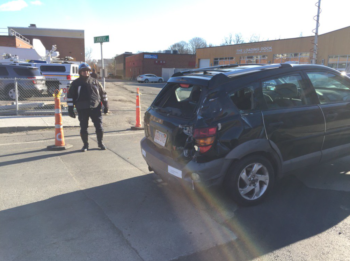Photo:
The MBTA Transit Police reported a man was hit by a Fitchburg-bound commuter rail train at the Brighton Street crossing at approximately 9:10 p.m. on Thursday, March 8.
The Transit Police, which has jurisdiction on MBTA property, said the man, believed to be in his 60s, suffered life-threatening injuries. Belmont Fire and Emergency Medical Service treated and transported the victim to an “area hospital.”
While the incident is under investigation, foul play is not suspected.
The Brighton Street crossing has seen its share of incidents including a man killed by a train in February 2009 and a woman seriously injured after her vehicle was caught between the gates in December 2016.
